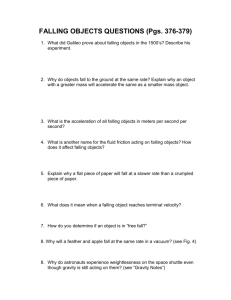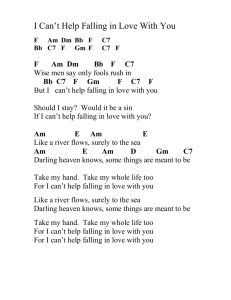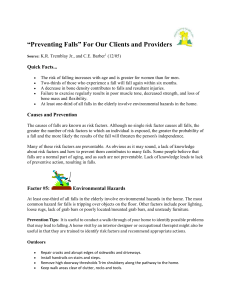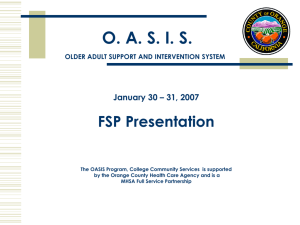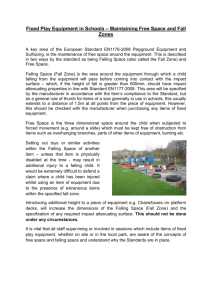Spring 2012 By Edward F. Ansello, Ph.D.
advertisement
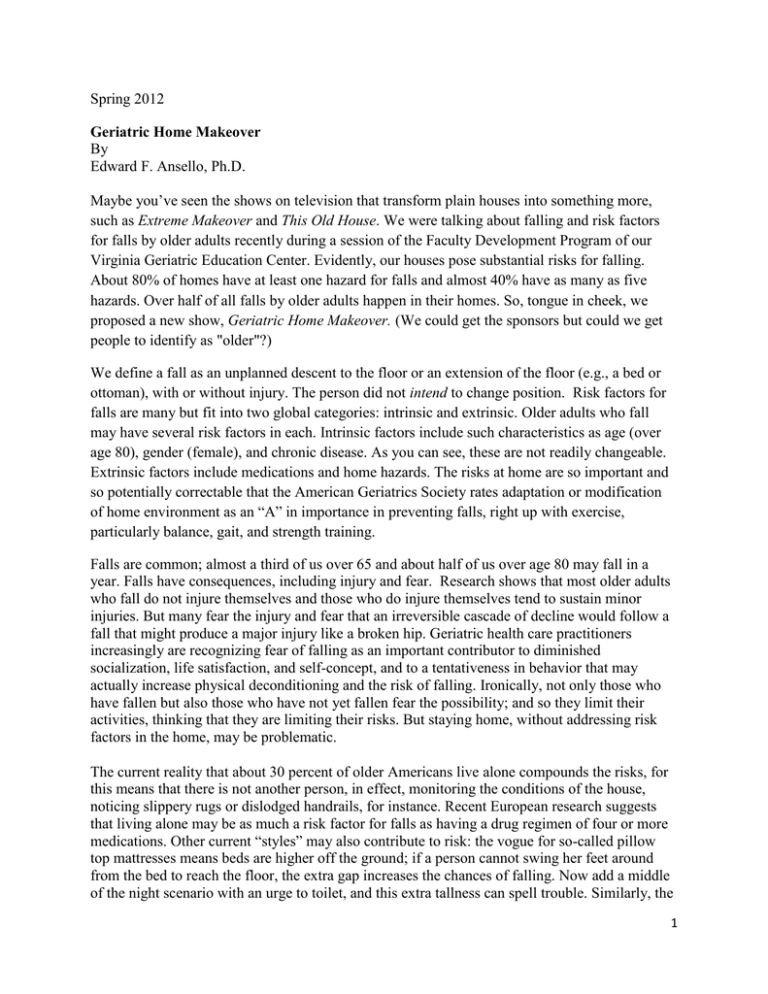
Spring 2012 Geriatric Home Makeover By Edward F. Ansello, Ph.D. Maybe you’ve seen the shows on television that transform plain houses into something more, such as Extreme Makeover and This Old House. We were talking about falling and risk factors for falls by older adults recently during a session of the Faculty Development Program of our Virginia Geriatric Education Center. Evidently, our houses pose substantial risks for falling. About 80% of homes have at least one hazard for falls and almost 40% have as many as five hazards. Over half of all falls by older adults happen in their homes. So, tongue in cheek, we proposed a new show, Geriatric Home Makeover. (We could get the sponsors but could we get people to identify as "older"?) We define a fall as an unplanned descent to the floor or an extension of the floor (e.g., a bed or ottoman), with or without injury. The person did not intend to change position. Risk factors for falls are many but fit into two global categories: intrinsic and extrinsic. Older adults who fall may have several risk factors in each. Intrinsic factors include such characteristics as age (over age 80), gender (female), and chronic disease. As you can see, these are not readily changeable. Extrinsic factors include medications and home hazards. The risks at home are so important and so potentially correctable that the American Geriatrics Society rates adaptation or modification of home environment as an “A” in importance in preventing falls, right up with exercise, particularly balance, gait, and strength training. Falls are common; almost a third of us over 65 and about half of us over age 80 may fall in a year. Falls have consequences, including injury and fear. Research shows that most older adults who fall do not injure themselves and those who do injure themselves tend to sustain minor injuries. But many fear the injury and fear that an irreversible cascade of decline would follow a fall that might produce a major injury like a broken hip. Geriatric health care practitioners increasingly are recognizing fear of falling as an important contributor to diminished socialization, life satisfaction, and self-concept, and to a tentativeness in behavior that may actually increase physical deconditioning and the risk of falling. Ironically, not only those who have fallen but also those who have not yet fallen fear the possibility; and so they limit their activities, thinking that they are limiting their risks. But staying home, without addressing risk factors in the home, may be problematic. The current reality that about 30 percent of older Americans live alone compounds the risks, for this means that there is not another person, in effect, monitoring the conditions of the house, noticing slippery rugs or dislodged handrails, for instance. Recent European research suggests that living alone may be as much a risk factor for falls as having a drug regimen of four or more medications. Other current “styles” may also contribute to risk: the vogue for so-called pillow top mattresses means beds are higher off the ground; if a person cannot swing her feet around from the bed to reach the floor, the extra gap increases the chances of falling. Now add a middle of the night scenario with an urge to toilet, and this extra tallness can spell trouble. Similarly, the 1 “green” trend toward compact fluorescent bulbs (CFL) to save energy may mean less brightness in a room or hallway. To my eyes CFL light seems dimmer, even while the light output claims to be the same as that of the incandescent bulb. With age, eyes tend to change. The lens thickens and there is a decreased pupillary response to changes in light, the net result of these changes being a tendency to have more problems seeing in dark and the correlated need for increased lighting. Older adults with vision impairment are 2.5 times more likely to sustain a fall. The vision impairment may require cataract surgery or extensive medical intervention. But floor lamps, being closer than ceiling lighting to what one may wish to read or where one may want to walk, are good additions to the “geriatric home,” as are night lights and overall boosts in lighting. There’s a common sense list of environmental hazards for falling in and around the home. These include having extension cords across pathways; cluttered areas; loose throw or scatter rugs that are not secured in place with tacks, double-sided tape or a gripping pad; well-worn and unstable furniture; dark or steep stairs; light switches that are difficult to reach; dim lighting at the house’s entry; uneven external steps; cracked or sloping sidewalks; a poorly marked raised threshold. Sure, we all live with some of these "need to get to" situations, but they become more important with age. More subtle concerns include the need for a resident to be able to distinguish one step from another in a stairway; installing color strips on the edges of stair treads helps. The same can be said for increasing the color contrast between walls and floors, in order to aid perspective, and installing inexpensive plug-in motion sensing LED lights that come on whenever movement is detected. Bathrooms and kitchens also need attention. With age, it may be difficult to rise from the standard toilet seat that is just 15 or 16 inches from the floor, without the aid of grab bars or a raised seat. Tub sides pose similar challenges, with the additional threat of a potentially slippery surface. Again, installing grab bars, vertical and/or horizontal, at the tub and non-slip bath mats for the tub bottom can be life-savers, literally. Kitchen cabinet shelves may become difficult to reach without using a stool or chair; the latter may unthinkingly be placed upon loose rugs, jeopardizing stability. Two- or three-step ladders with side bars, the type that fold up, offer help, as do small hand-held extension grabbers to reach and grip shelf items. Basically, Geriatric Home Makeover (coming to a theater near you) would encourage all of us to reassess our homes for safety, considering each room's accessibility, traffic pattern, lighting, and usability as we grow older. There are a number of resources already available to help us in this job. These include a comprehensive guide developed by the Occupational Therapy Geriatric Group at the University of Buffalo called the Home Safety Self Assessment Tool (HSSAT) available on-line at www.agingresearch.buffalo.edu/hssat/hssat_v3.pdf. The Centers for Disease Control and Prevention (CDC) website contains results of interventions by various professions (e.g., occupational therapists) under the listing of home modifications, but these are more for researchers than for lay people. Lastly, the University of Newcastle in Australia has online the Home Falls and Accidents Screening Tool (HOME FAST) which asks the reader 20 questions that help to identify potential sources of risks for falling: www.alswh.org.au/substudy_analyses/HOMEFASTSELFREPORT.pdf. 2 When older adults fall, it is often the result of a complex interaction of contributing risk factors. Reducing hazards in the home addresses just one set of the several. Someone who has fallen before or who has lower extremity weakness, slow gait speed, or unreliable balance has significant risk and should seek an interprofessional assessment by medicine, physical and occupational therapy, pharmacy, etc. A thorough drug regimen review is absolutely the most important screening to identify medications that can cause falling. But reducing home hazards makes sense in any event, and it's wise to start a Geriatric Home Makeover. KEY WORDS: risks for falls, hazards in the home, older adults and falling, home safety assessments, fear of falling 3

